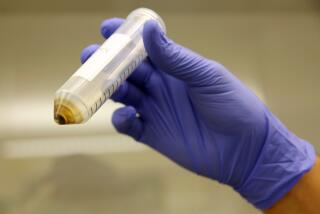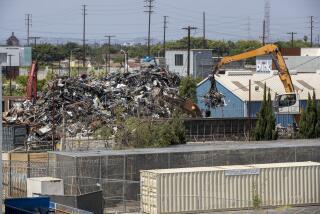Costs mount for Glendale’s ongoing inquiry into chromium 6
The costs keep piling up as a project to study chromium 6 removal becomes a bigger expense than expected for Glendale, which has been trudging through nine years of research to strip the cancer-causing contaminant from groundwater.
Although the City Council last week approved spending an additional $400,000 to continue research at two testing facilities — just two months after the council gave the green light to spend $550,000 in grant and state funding on more research — some city officials are getting antsy.
“This has been going on for a number of years,” said Councilman Rafi Manoukian. “I want to get this thing done and over with.”
Cities throughout the San Fernando Valley have been grappling with chromium 6 contamination caused decades ago by aerospace manufacturing. Glendale has spent more than $7.8 million on removal research, most of which has come from state grants and other funding sources.
Peter Kavounas, assistant general manager for water services at Glendale Water & Power, said he too was frustrated by the slow process. But he said research takes time, especially as the state moves slowly to set tighter restrictions on chromium 6 levels.
“We are very much aligned in the same line of thought that we need to bring this to an end,” Kavounas said. But he added, “Research by definition is something difficult to predict when it will end.”
In about four years, the state may cap chromium 6 levels at between 5 and 10 parts per billion, much lower than the current 50 parts per billion limit, Kavounas said. After being treated and blended with clean imports, Glendale’s water is already at about 5 parts per billion of chromium 6. Before treatment, underground water from some local wells contains between 45 and 70 parts per billion.
Although Glendale has settled on two methods for stripping the chemical from water, more research about side effects is needed, Kavounas said.
Kavounas said the research began as a focused study but grew larger as the field of chromium 6 removal expanded. In addition, state officials say they will look to Glendale’s research as they set tighter restrictions, which has expanded the scope of the city’s research.
Part of the $400,000 will cover requests by the Environmental Protection Agency and California Department of Public Health for additional cost information, according to a city report.
The money will also keep two testing facilities open through April. Then the city will deactivate one, and a group made up of companies responsible for the presence of chromium 6 will take control of the other.
More to Read
Start your day right
Sign up for Essential California for news, features and recommendations from the L.A. Times and beyond in your inbox six days a week.
You may occasionally receive promotional content from the Los Angeles Times.






